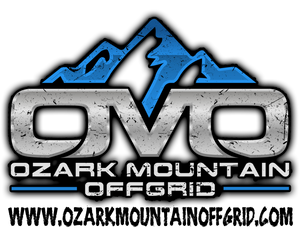As the world becomes increasingly aware of the importance of sustainable living, many homeowners are turning to comprehensive home solar kits as a viable solution for energy independence. These kits not only offer a way to harness the abundant power of the sun but also represent a significant step towards reducing one's carbon footprint and electricity costs. This blog by Ozark Mountain Offgrid will explore the intricacies of home solar kits, outlining their key components, the cost-effectiveness, and the environmental benefits they bring.
Understanding Solar Kit Components
A complete solar power kit is an all-inclusive package that typically contains solar panels, an inverter, batteries, mounting brackets, wiring, junction boxes, and a charge controller for off-grid systems. The solar panels capture sunlight and convert it into electricity through photovoltaic cells. The generated direct current (DC) electricity is then converted to alternating current (AC) by the inverter, making it usable for home appliances. Excess energy can either be stored in batteries for later use or fed back into the grid.
Installation and Maintenance
Installation and maintenance of comprehensive home solar kits are essential for ensuring their efficiency and longevity. The installation process typically includes several key steps:
- Site Assessment: This first step involves evaluating your property to ensure it's suitable for solar panel installation, considering factors like roof size, angle, and potential obstructions for optimal sunlight exposure.
- Design and Sizing: Customize the solar system according to your specific energy needs and property characteristics for maximum efficiency.
- Permitting and Approvals: It's essential to obtain the necessary permits and comply with local regulations and guidelines for solar panel installations.
- Equipment Procurement: This involves sourcing reliable and high-quality components such as solar panels, inverters, batteries, and mounting systems.
- Physical Installation: This includes mounting the solar panels, making electrical connections, and ensuring everything is set up correctly. It's advised to have this done by a professional to ensure safety and efficiency.
For maintenance, key steps include:
- Regular Cleaning: Solar panels should be kept clean of dirt and debris to ensure they function efficiently.
- Inspection and Monitoring: Regular inspections and performance monitoring can help identify potential issues before they become bigger problems.
- Electrical System Maintenance: Regular checks of the connections and wiring help maintain the safety and efficiency of the system.
- Professional Service: Engaging experts for comprehensive care and maintenance can prolong the life of your solar system and ensure its optimal performance.
Cost-Benefit Analysis
The initial investment in a solar power system can be offset by the significant reduction in energy bills and potential eligibility for government incentives and rebates. While the cost of components like battery storage has decreased over the years, making solar systems more affordable, it's important to consider factors like the size of your home, energy requirements, and local climate when choosing a solar kit.
Environmental Impact
Solar power systems significantly reduce greenhouse gas emissions compared to traditional energy sources. They operate completely emission-free, contributing to cleaner air and water, making them a crucial part of efforts to combat climate change. In regions where electricity is predominantly generated from fossil fuels, switching to solar power can have a notable positive environmental impact.
Real-World Success Stories
Real-world success stories of home solar system installations provide powerful testimony to the benefits of this sustainable energy solution. Here are a few examples that illustrate the transformative impact of solar power in residential settings:
- The Johnson Family's Home Solar System: This family chose a solar panel installation consisting of high-efficiency solar panels with an advanced monitoring system. The result was a significant reduction in their energy consumption, leading to considerable savings on their utility bills.
- The Garcia Residence: Committed to sustainability, the Garcias selected their solar system after evaluating various factors, including panel efficiency and financial incentives. Their installation not only reduced their carbon footprint but also brought substantial financial savings through net metering.
Conclusion
Investing in a comprehensive home solar kit is a significant step toward achieving energy independence and embracing a sustainable lifestyle. With proper research, planning, and installation, homeowners can enjoy the benefits of clean and renewable energy for years to come.
Are you ready to join the renewable energy revolution and gain energy independence? Visit Ozark Mountain Offgrid for expert advice and high-quality solar solutions tailored to your home's needs.
